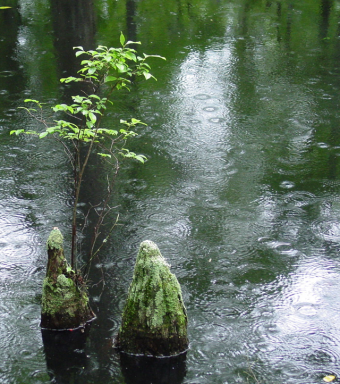Wetlands are characterized by the suite of plants they contain. In order for a given wetland to maintain that plant community, the wetland must keep a proper range of water levels over many years, neither too wet nor too dry. The most difficult task in creating a new wetland is to get the proper balance of water flow into and out of the new site. The Wetland Hydrogeology group at Old Dominion University, headed by Rich Whittecar, joined with researchers at Virginia Tech and University of Kentucky to develop a fresh-water wetland hydrology tool - Wetbud. The main goal of this research was to develop a tool that regulatory agencies like the U.S. Army Corps of Engineers, or the Virginia Department of Environmental Quality, would adapt as a standard for wetland developers and consultants to use in submitting requests to construct new wetlands. In its Basic Version, this wetland water budgeting package calculates monthly scale water budgets for a potential created wetland site for Wet, Normal and Dry years. One innovation in Wetbud is its ability to retrieve weather data from NOAA websites needed to make the calculations for your study site. Wetbud can calculate how much water flows into the site from groundwater, side-slopes, and streams, and how much evaporates, seeps, and flows away from the site. If you need a really detailed model, Wetbud can include the effects of topography and underlying strata in the calculations, too.
Free, the software is available at: http://www.landrehab.org/WETBUD . For the past 8 years Wetland Studies and Solutions, Inc. (WSSI), Centerville, Virginia, funded the development of the software and its testing at nearly a dozen different natural and created wetlands in Virginia. Based on this work done by graduate students and faculty, the Army Corps of Engineers has now approved it for use by its staff.




